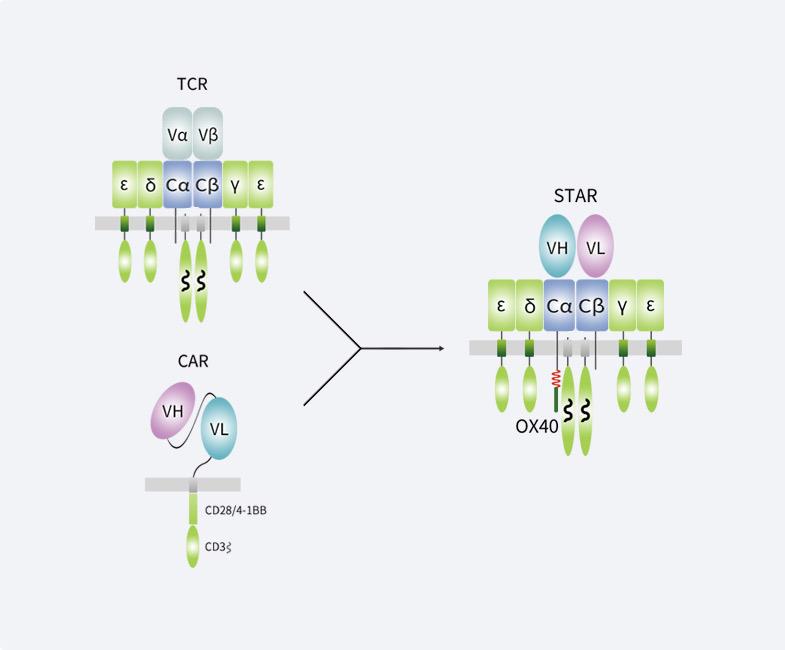STAR-TTM Cell Therapy Platform
BriSTAR Immunotech’s STAR-T platform boasts significant advantages over traditional CAR-T products in treating tumors. STAR-T engages, like CAR-T, tumor antigens independently of human leukocyte antigen (HLA), and offers a multi-pronged option to target solid tumors, including sensitive tumor antigen engagement, ability to engage multiple tumor targets, minimizing tumor antigen escape and enhanced tumor infiltration.
-

-
STAR structure resembles TCR, superior to CAR-T
See details about STAR-TSTAR-T platformSTAR-T platform
STAR (Synthetic T cell receptor and Antigen Receptor) - T, developed by the scientific team at BriSTAR Immunotech, is a TCR-like structure designed to engage tumor antigens more sensitively and to kill tumor cells more effectively. STAR design, inspired by the structure and function of TCR, combines the power of HLA-independent tumor targeting of CAR-T (Chimeric Antigen Receptor T-Cells) with the exquisite antigen engagement capability of TCR-T (T cell receptor engineered T-cells) to potentially achieve better tumor killing and safety profile. The signaling capacity of STAR is further enhanced by the addition of the co-stimulatory domain derived from OX40 receptor to the intracellular terminus of the TCR chain.








